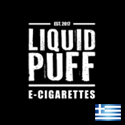Category: Is It Safe
SO WE’RE SATISFIED AND GETTING LESS NICOTINE? THAT’S A GOOD THING RIGHT?
Check out this study done by Dr. Farsalinos.
INTERESTING INFORMATION
Some interesting information contained in this article (thanks for the heads up Rush!):
It’s a complicated read, but let’s get to the heart of the matter shall we?
Conclusions
Current state of knowledge about chemistry of liquids and aerosols associated with electronic cigarettes indicates that there is no evidence that vaping produces inhalable exposures to contaminants of the aerosol that would warrant health concerns by the standards that are used to ensure safety of workplaces. However, the aerosol generated during vaping as a whole (contaminants plus declared ingredients ) creates personal exposures that would justify surveillance of health among exposed persons in conjunction with investigation of means to keep any adverse health effects as low as reasonably achievable. Exposures of bystanders are likely to be orders of magnitude less, and thus pose no apparent concern.
Bottom line… risk reduction and not risk elimination, but I would hope we all know that by now. Keep these studies going! They can only benefit us in the long run be it good news OR bad!!
From CASAA
New study confirms that chemicals in electronic cigarettes pose minimal health risk
Read about it HERE!
Published on Jul 24, 2013
A public lecture on e-cigarettes delivered by Dr. Lynne Dawkins on 3rd July 2013. This lecture gives an introduction to e-cigarettes, what they are and how they work. It then brings the audience up to date with the current research: who uses them, how and why, nicotine content and delivery, safety issues, harm reduction and regulation.
The Video:
TOP 20 REBUTTALS TO WIN AN E-CIGARETTE DEBATE
This is some terrific information that all vapers should be armed with.
KNOWLEDGE IS POWER!
Some excellent work done here by John Madden in gathering all this information.
See the list HERE.
NEWS ARTICLES
As you already probably know, we’re seeing more and more articles in the news about electronic cigarettes.
Here’s yet another.
What did I get from this one?
Drexel University professor Igor Burstyn concludes “current data do not indicate that exposures to vapors from contaminants in electronic cigarettes warrant a concern.”
In plain language, Burstyn concludes: “It’s about as harmless as you can get.”
“I wouldn’t worry at all if someone was smoking one of these by my kids,” Burstyn said. “From a pure health perspective, these are not as bad as a cigarette.”
🙂
You can read the entire article HERE.
I’ll try to post more articles here as I come across them.
MORE GOOD NEWS ABOUT VAPING!
The Clearstream Clinical is complete and the news is good. Click the link below to read about it and see the video of the presentation:
Electronic cigarettes: no adverse effects on blood and oxygen supply to the heart
Thanks to Marco from FlavorArt for he heads up on this one.
DR FARSALINOS RESPONDS TO THE NEW FRENCH STUDY
If you’ve seen some of the headlines lately, you may have raised your eyebrows. I’m getting a bunch of questions over it.
The study was done in France and we’ve seen some headlines such as “Study says e-cigarettes contain carcinogens similar to regular cigarettes” and “Report: e-cigarettes are ‘potentially carcinogenic’”
Take a deep breath (which most of us can now do thanks to electronic cigarettes) and read the response from Dr. Farsalinos HERE.
And let’s remember folks, the use of electronic cigarettes is harm reduction, not harm removal. The safest way to vape continues to be… not to vape.
Now, let’s enjoy a tune from Germany! Nice work Jayden Lyrics & Philgood.
(in my best cavemen impression)
Ugh… me agree… Phil Good! 🙂
CAN SOMEONE PLEASE TELL ME AGAIN WHY THE PROPOSED BANS??
Every time I hear about another proposed ban on electronic cigarettes, I scratch my head and wonder why. Why is something that has the potential to save so many lives being met with such fierce opposition. Why? Because of how it looks?
I mean it couldn’t be about money could it? Our government and agencies couldn’t possibly care more about money than the health of it’s citizens could it? That just can’t be… right?
Because with every new report and study, we see more and more proof that vaping electronic cigarettes is a far safer alternative to that of smoking a traditional cigarette. Here is yet another example.
There is a new study out from Drexel University School of Public Health. It was created by Igor Burstyn, PhD. You can read the entire study (PDF file) by clicking THIS link. You can also read additional information and ways to discuss and have questions answered about the study on the CASAA website.
Here are the key conclusions from the study:
- Even when compared to workplace standards for involuntary exposures, and using several conservative (erring on the side of caution) assumptions, the exposures from using e-cigarettes fall well below the threshold for concern for compounds with known toxicity. That is, even ignoring the benefits of e-cigarette use and the fact that the exposure is actively chosen, and even comparing to the levels that are considered unacceptable to people who are not benefiting from the exposure and do not want it, the exposures would not generate concern or call for remedial action.
- Expressed concerns about nicotine only apply to vapers who do not wish to consume it; a voluntary (indeed, intentional) exposure is very different from a contaminant.
- There is no serious concern about the contaminants such as volatile organic compounds (formaldehyde, acrolein, etc.) in the liquid or produced by heating. While these contaminants are present, they have been detected at problematic levels only in a few studies that apparently were based on unrealistic levels of heating.
- The frequently stated concern about contamination of the liquid by a nontrivial quantity of ethylene glycol or diethylene glycol remains based on a single sample of an early technology product (and even this did not rise to the level of health concern) and has not been replicated.
- Tobacco-specific nitrosamines (TSNA) are present in trace quantities and pose no more (likely much less) threat to health than TSNAs from modern smokeless tobacco products, which cause no measurable risk for cancer.
- Contamination by metals is shown to be at similarly trivial levels that pose no health risk, and the alarmist claims about such contamination are based on unrealistic assumptions about the molecular form of these elements.
- The existing literature tends to overestimate the exposures and exaggerate their implications. This is partially due to rhetoric, but also results from technical features. The most important is confusion of the concentration in aerosol, which on its own tells us little about risk to heath, with the relevant and much smaller total exposure to compounds in the aerosol averaged across all air inhaled in the course of a day. There is also clear bias in previous reports in favor of isolated instances of highest level of chemical detected across multiple studies, such that average exposure that can be calculated are higher than true value because they are “missing” all true zeros.
- Routine monitoring of liquid chemistry is easier and cheaper than assessment of aerosols. Combined with an understanding of how the chemistry of the liquid affects the chemistry of the aerosol and insights into behavior of vapers, this can serve as a useful tool to ensure the safety of e-cigarettes.
- The only unintentional exposures (i.e., not the nicotine) that seem to rise to the level that they are worth further research are the carrier chemicals themselves, propylene glycol and glycerin. This exposure is not known to cause health problems, but the magnitude of the exposure is novel and thus is at the levels for concern based on the lack of reassuring data.














 Store
Store










